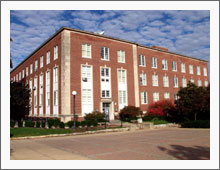
 |
|
About the Bioacoustics Research Lab

The ultrasonic propagation properties in tissue, including attenuation, absorption, speed, impedance, and nonlinearity parameter, appear to be largely associated with the macromolecular constituents and, to a lesser extent, to the higher level tissue structure. Thus, the dependence of these properties on tissue constituents such as water, protein and fat have been investigated. The results of these studies contribute to our understanding of Molecular Nanostructures and their role in the determination of ultrasonic propagation parameters. Ultrasonically produced heat and cavitation can cause damage to tissues at high exposure levels. Thus, even though no damage in patients at levels used for clinical diagnosis has ever been reported, the role of overlying tissues on ultrasound exposure to deep structures, such as the fetus, and possible biological effects on patients must continue to be investigated. Cavitation can also be used for the benefit of humans in cleansing applications. Researchers in this group all have their primary departmental appointments in the Department of Electrical and Computer Engineering. All are members of the Bioengineering Faculty and some have joint appointments in Biophysics, Medicine or Nutritional Sciences. |
|||||||||||||||||||||||||||||||||||||||||||||||||||||||||||||||
| Bioacoustics Research Lab. |